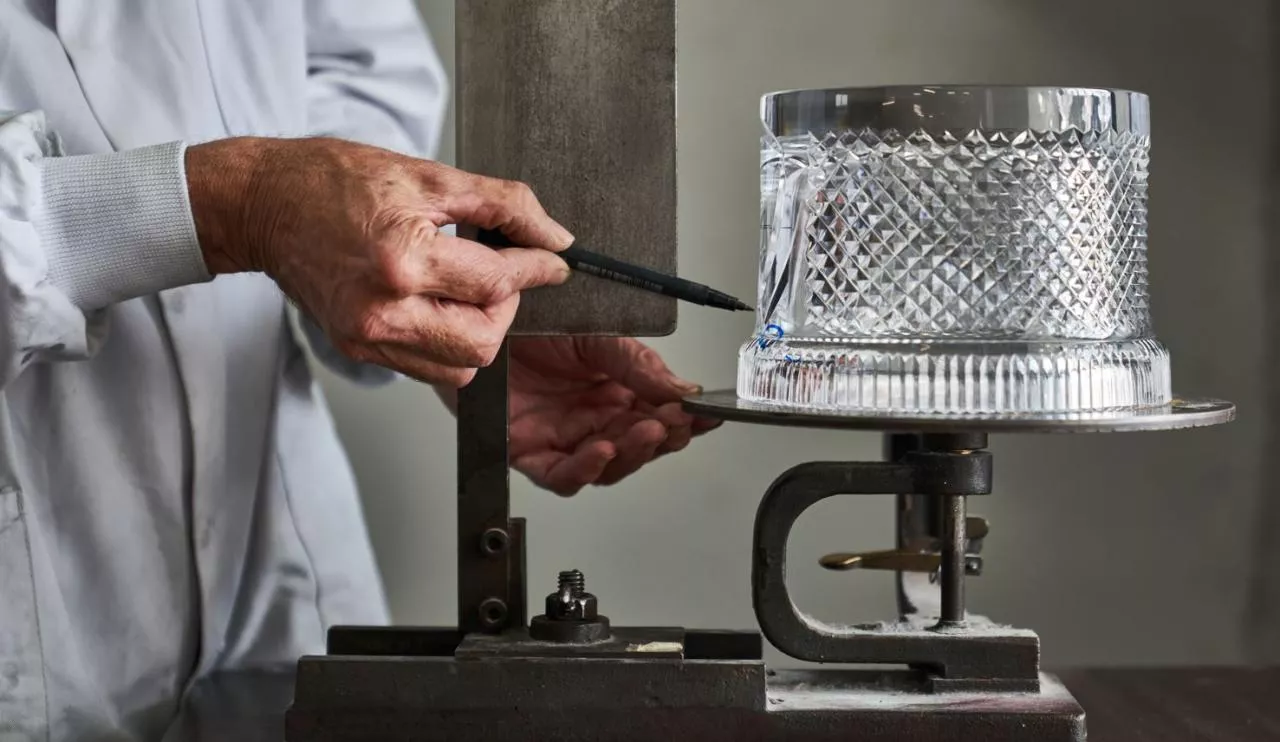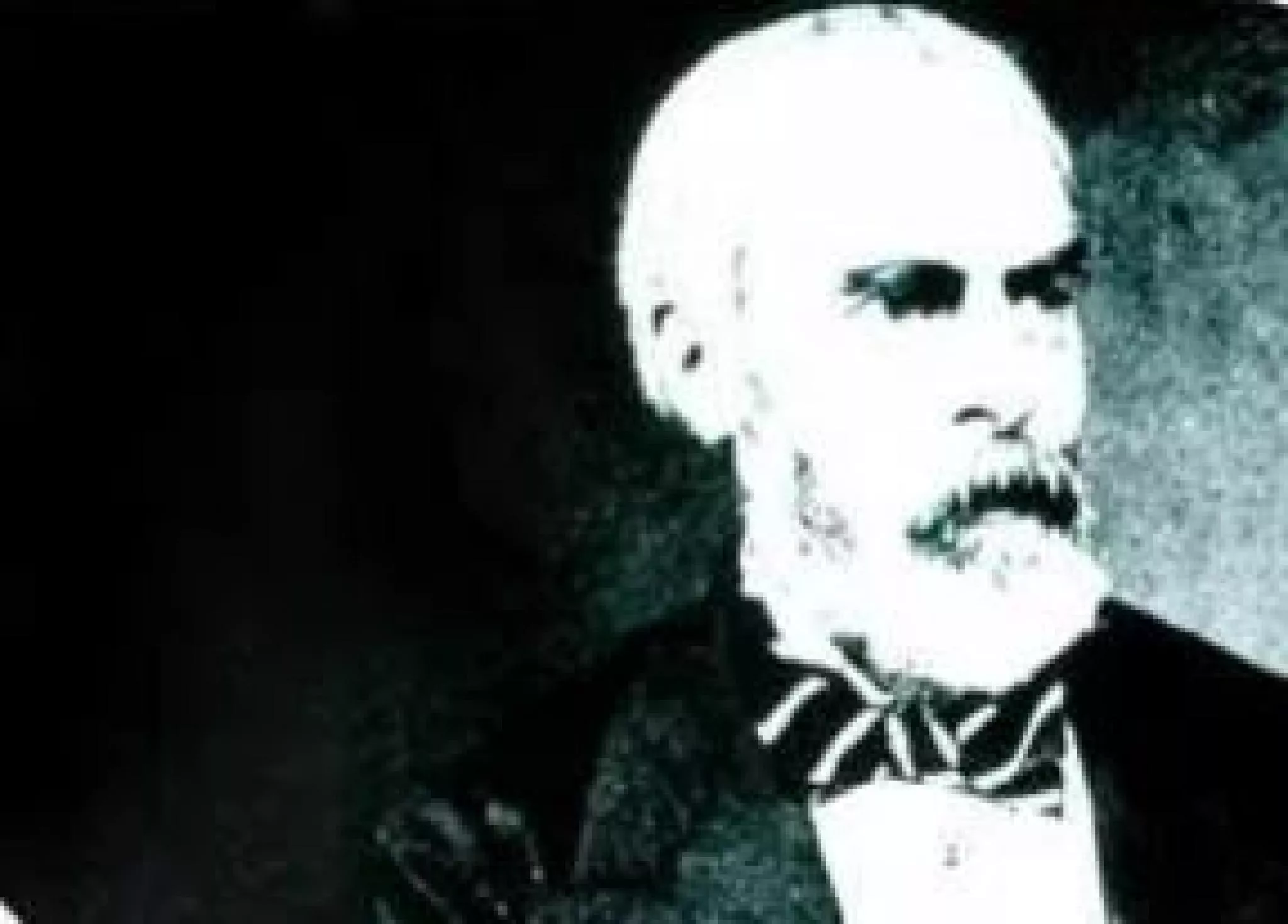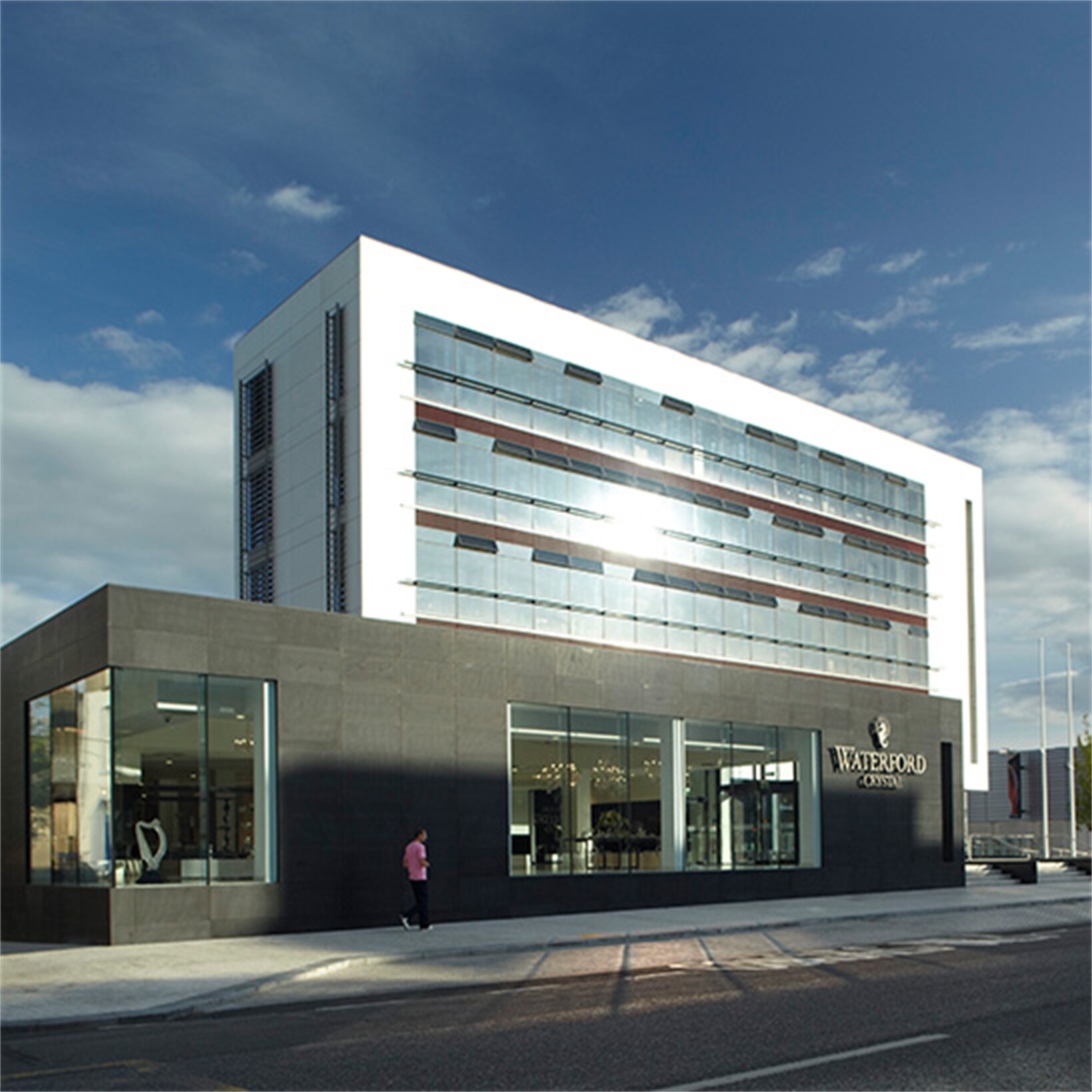Stemware’s Biggest Comeback Story
A Brief History of Waterford Crystal
How did a company that closed its doors for nearly 100 years become one of the world’s leading glasswork companies? A lot of hard working, inspired, and talented managers, designers and glassworkers is the short answer. Pour your favorite beverage into some stemware and read on to discover more of the fascinating history of Waterford Crystal.
Stemware’s Biggest Comeback Story
A Brief History of Waterford Crystal
How did a company that closed its doors for nearly 100 years become one of the world’s leading glasswork companies? A lot of hard working, inspired, and talented managers, designers and glassworkers is the short answer. Pour your favorite beverage into some stemware and read on to discover more of the fascinating history of Waterford Crystal.
Waterford’s Beginnings
Waterford’s Beginnings

Handmaking Process
Handmaking Process

Glasswork is an honored Irish tradition from ages past and evidence of cherished glasswork dates as far back as the 13th century. While the ancient techniques of this trade are lost to time, the modern-day equivalent produces beautiful and cherished pieces. This long-standing Irish tradition makes Ireland the natural place for world-renowned glasswork company Waterford. While the company doesn’t quite date back to the Middle Ages, it boasts over 200 years of quality glasswork.
Beginning in 1783, George and William Penrose established a glassmaking company in Waterford, Ireland, the country’s oldest city. The brothers were primarily businessmen and knew little about actually working with glass. In 1785 they added glass compounder, John Hill, to the company to provide that expertise. Hill insisted on polishing glass after cutting it, a move uncommon at the time, but now the signature look of Waterford Crystal. Hill stayed at Waterford long enough to pass on his trade secrets to a clerk within the company, Jonathan Gatchell, but left the company following a significant misunderstanding only 3 years after joining Waterford.

Handmaking Process
Waterford
Handmaking Process
Handmaking Process

Glasswork is an honored Irish tradition from ages past and evidence of cherished glasswork dates as far back as the 13th century. While the ancient techniques of this trade are lost to time, the modern-day equivalent produces beautiful and cherished pieces. This long-standing Irish tradition makes Ireland the natural place for world-renowned glasswork company Waterford. While the company doesn’t quite date back to the Middle Ages, it boasts over 200 years of quality glasswork.
Beginning in 1783, George and William Penrose established a glassmaking company in Waterford, Ireland, the country’s oldest city. The brothers were primarily businessmen and knew little about actually working with glass. In 1785 they added glass compounder, John Hill, to the company to provide that expertise. Hill insisted on polishing glass after cutting it, a move uncommon at the time, but now the signature look of Waterford Crystal. Hill stayed at Waterford long enough to pass on his trade secrets to a clerk within the company, Jonathan Gatchell, but left the company following a significant misunderstanding only 3 years after joining Waterford.
Despite those interpersonal hiccups, Waterford quickly became recognized as high quality glassware and their works were sold to wealthy elites and royalty for the next 70 years. Gatchell, who began as a lowly clerk, managed to climb the ranks over these years and became a partner after the death of William Penrose in 1796 and sole proprietor of the company in 1810. He remained at the helm until his own death in 1823. Much of the success of Waterford, particularly in those early years, can be attributed to Gatchell’s expertise and hard work as he navigated ever-changing laws regarding flint glass and rising worker’s fees. Unfortunately, by the time Gatchell’s son, George, took over, the business was struggling. The high Waterford standards never wavered, but the company shut down in 1853.
That’s right, Waterford Crystal closed its doors 170 years ago.
Waterford Crystal: 110881
Alana Double Old FashionedDespite those interpersonal hiccups, Waterford quickly became recognized as high quality glassware and their works were sold to wealthy elites and royalty for the next 70 years. Gatchell, who began as a lowly clerk, managed to climb the ranks over these years and became a partner after the death of William Penrose in 1796 and sole proprietor of the company in 1810. He remained at the helm until his own death in 1823. Much of the success of Waterford, particularly in those early years, can be attributed to Gatchell’s expertise and hard work as he navigated ever-changing laws regarding flint glass and rising worker’s fees. Unfortunately, by the time Gatchell’s son, George, took over, the business was struggling. The high Waterford standards never wavered, but the company shut down in 1853.
That’s right, Waterford Crystal closed its doors 170 years ago.
Alana Double Old Fashioned
Waterford’s Resurgence
Waterford’s Resurgence
But they didn’t stay closed.
Following World War II, the company fell into the hands of Kael Bacik who hired Miroslav Havel as his chief designer. This pair of Czechs made Waterford into the company we recognize today. Inspired by Waterford’s original work, Havel intently studied techniques and designs from the company’s beginnings and used them as the basis for what is now the world’s best–selling crystal design – Lismore. (click here to learn more about Lismore and a few other popular Waterford patterns).
It took 8 years for the company to turn a profit after re-opening, but once it did, it continued to grow year after year, opening new sites in multiple locations. Perhaps Waterford’s most iconic achievement was the creation of crystal ball for the Times Square Millennium ball drop in 2000.

Designed by Waterford
But they didn’t stay closed.
Following World War II, the company fell into the hands of Kael Bacik who hired Miroslav Havel as his chief designer. This pair of Czechs made Waterford into the company we recognize today. Inspired by Waterford’s original work, Havel intently studied techniques and designs from the company’s beginnings and used them as the basis for what is now the world’s best–selling crystal design – Lismore. (click here to learn more about Lismore and a few other popular Waterford patterns).
It took 8 years for the company to turn a profit after re-opening, but once it did, it continued to grow year after year, opening new sites in multiple locations. Perhaps Waterford’s most iconic achievement was the creation of crystal ball for the Times Square Millennium ball drop in 2000.

Time's Square NYE Ball
Designed by Waterford
Designed by Waterford
Modern Waterford
Modern Waterford
Following that incredible achievement, the company fell upon hard times again and was purchased in 2009 by WWRD Holdings, a US based company that also owned Wedgewood and Royal Doulton. WWRD Holdings and it’s subsidiaries were subsequently sold to Finnish company, Fiskars in 2015. All 3 brands continue to maintain the high quality for which they achieved prominence despite the changes in ownership.
Following that incredible achievement, the company fell upon hard times again and was purchased in 2009 by WWRD Holdings, a US based company that also owned Wedgewood and Royal Doulton. WWRD Holdings and it’s subsidiaries were subsequently sold to Finnish company, Fiskars in 2015. All 3 brands continue to maintain the high quality for which they achieved prominence despite the changes in ownership.
For Waterford, this means they are still committed to the same quality that inspired the Penrose brothers to begin glasswork 240 years ago. The company has expanded from traditional stemware to include fine China & flatware, vases, bowls & centerpieces, collectibles, lighting, chandeliers, paperweights, holiday ornaments and gifts. The company’s design team is led by John Connolly who leads following the legacy of the late Jim O’Leary, who was the master craftsman behind many of Waterford’s modern accomplishments.

For Waterford, this means they are still committed to the same quality that inspired the Penrose brothers to begin glasswork 240 years ago. The company has expanded from traditional stemware to include fine China & flatware, vases, bowls & centerpieces, collectibles, lighting, chandeliers, paperweights, holiday ornaments and gifts. The company’s design team is led by John Connolly who leads following the legacy of the late Jim O’Leary, who was the master craftsman behind many of Waterford’s modern accomplishments.

If you ever find yourself in the rich Irish south-east, you can make a visit to the city Waterford and treat yourself to afternoon tea and a tour of the glassworks factory as well as several other unique historical experiences unrelated to glassware. If you can’t make it to Ireland, you can still celebrate the rich history of Waterford at home, with the iconic Lismore collection or one of their dozens of other gorgeous patterns.
Much Love,

If you ever find yourself in the rich Irish south-east, you can make a visit to the city Waterford and treat yourself to afternoon tea and a tour of the glassworks factory as well as several other unique historical experiences unrelated to glassware. If you can’t make it to Ireland, you can still celebrate the rich history of Waterford at home, with the iconic Lismore collection or one of their dozens of other gorgeous patterns.
Much Love,





